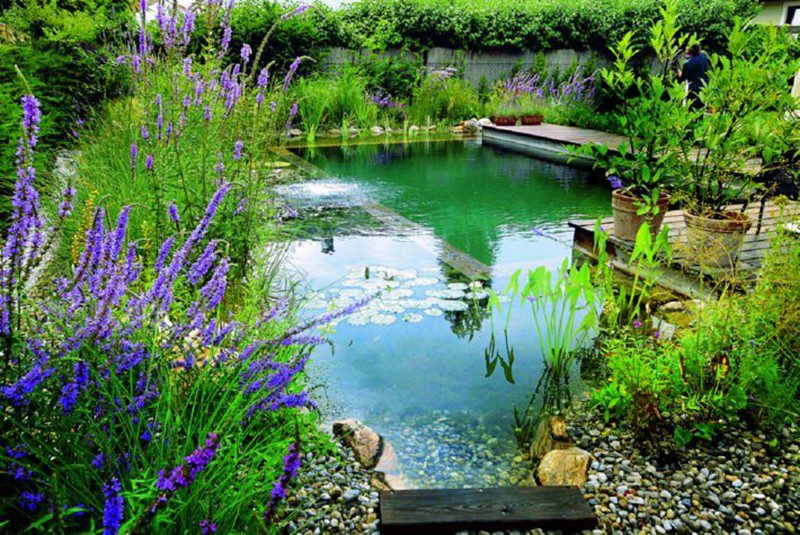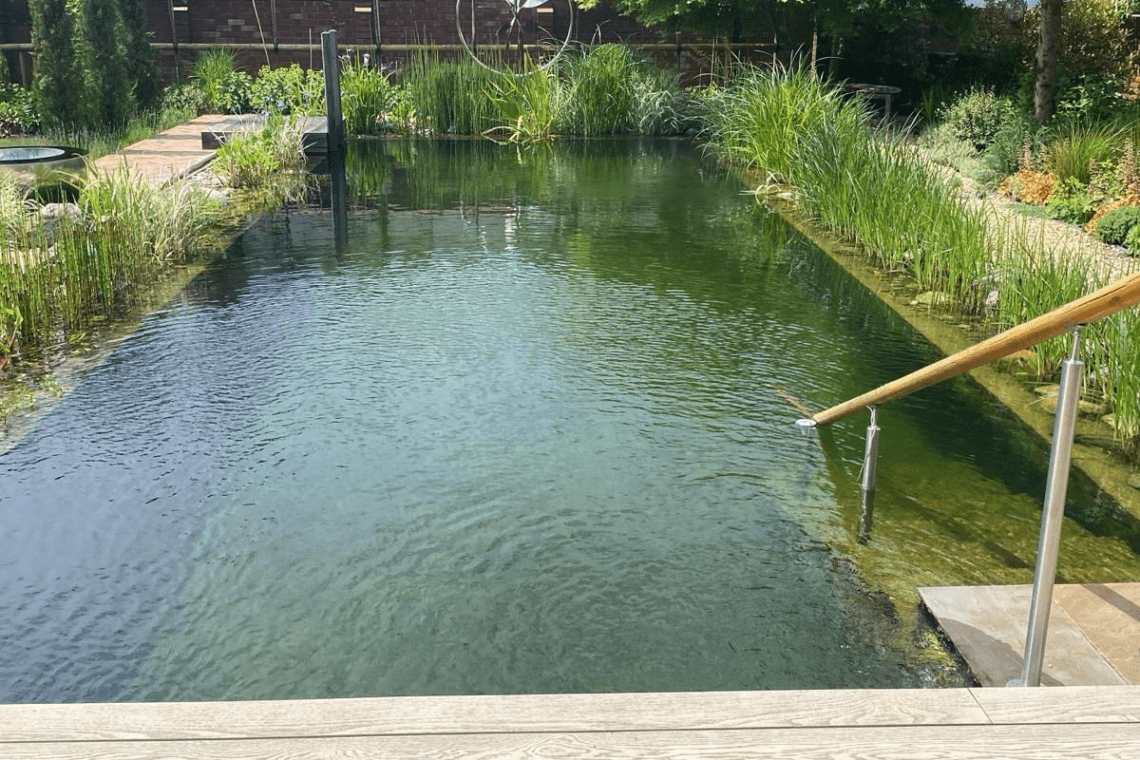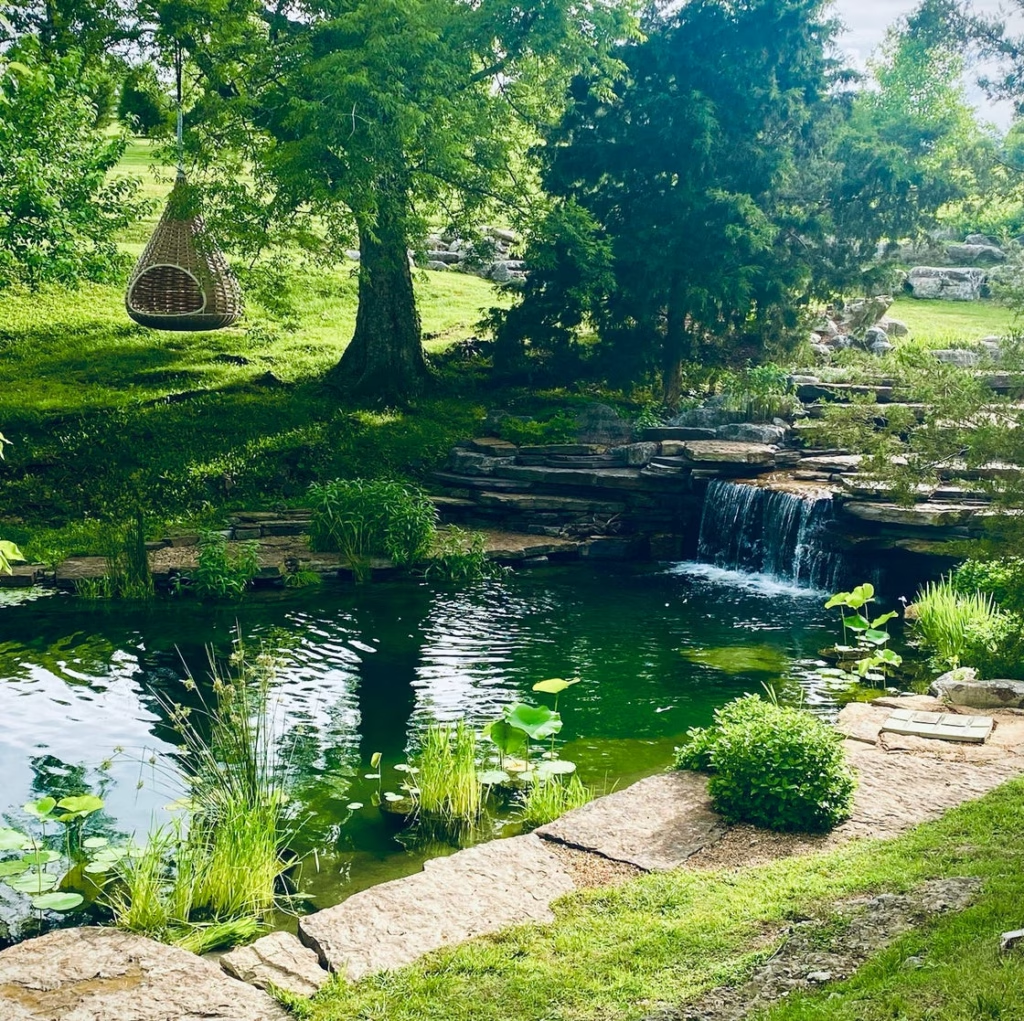Creating a swim pond offers you an excellent way to enjoy the beauty of nature while maintaining a sustainable lifestyle. Embracing eco-friendly practices through the use of reclaimed materials in your pond design not only enhances its charm but also contributes positively to the environment. In this guide, you’ll learn about what swim ponds are, the safe reclaimed materials available for use, best practices for sourcing and evaluating these materials, financial implications, and innovative ideas for utilizing reclaimed items effectively.
Discover the Joy of Eco-Friendly Swim Ponds with Reclaimed Materials
Swim ponds, often referred to as natural swimming pools, provide a cleaner and more environmentally friendly alternative to traditional swimming pools. Unlike conventional pools that require chemicals for sanitation, swim ponds utilize natural filtration methods, such as plants and biological systems, to keep the water clear and safe.
These ponds create a diverse habitat that supports local wildlife while offering you a relaxing space to unwind. By incorporating reclaimed materials into your design, you not only reduce waste but also make a statement about your commitment to sustainability. This practice aligns perfectly with eco-friendly values and adds a unique touch to your outdoor living space.
Using reclaimed materials can significantly reduce costs associated with swim pond construction, and they often require less maintenance over time compared to traditional pools. In adopting environmentally conscious design, you encourage a healthier ecosystem while enjoying the benefits that come with eco-friendly outdoor living.
Serene natural swim pond showcasing rocks and lush vegetation (Source: Hearst)
What Reclaimed Materials Can You Trust for Your Swim Pond?
You need to carefully evaluate the types of reclaimed materials you intend to use for your swim pond to ensure they are safe and suitable for aquatic environments. Here are some reliable options:
-
Wood: Reclaimed wood can come from old barns or used shipping pallets. It is perfect for decking or constructing other features around your pond. Make sure it is treated for water resistance and check that it does not contain harmful chemicals from previous use.
-
Stone: Utilizing natural stone from reclaimed sources can add an earthy and beautiful aesthetic. It works well for edging, walkways, and even as part of your filtration system.
-
Concrete: Recycled concrete can provide a stable base for your pond. Mixing it on-site helps minimize waste and lowers your carbon footprint.
-
Glass: Recycled glass can serve as a striking decorative element or be integrated into your filtration system, enhancing both function and visual appeal.
When selecting materials, avoid those that could leach harmful substances into the water. For instance, ensure that any reclaimed wood is free from treatments that might alter water quality. Focus on durable materials that will withstand constant exposure to water.

Garden pond featuring stone edging and reclaimed materials (Source: Fresh Design Blog)
Crafting Eco-Friendly Swim Ponds: Best Practices for Evaluation and Sourcing
Proper sourcing and evaluation of reclaimed materials are key to ensuring safety and compliance for your swim pond construction. Here are some best practices:
-
Material Selection: Aim for locally sourced materials to reduce travel emissions. This includes reclaimed wood, stones, and recycled glass.
-
Safety Testing: Conduct leaching tests on the materials you plan to use, especially for reclaimed woods. This is vital to ensure they do not release harmful chemicals into the pond.
-
Durability Assessment: Select materials with a proven track record of durability in wet environments. For example, stainless steel won’t corrode and is ideal for surrounding ponds.
-
Emphasizing Natural Filtration: Create natural filtration systems using plants and minerals, which cuts down on chemicals and boosts the biodiversity of your pond.
Consulting with experts knowledgeable in natural pool construction can provide helpful insights as you make decisions about materials and installation methods.

Flowchart outlining the sourcing and evaluation process for materials (Source: MDPI)
Understanding the Legal Landscape: Compliance and Safety in Pond Construction
Using reclaimed materials in your swim pond requires compliance with local regulations. Here are essential aspects to keep in mind:
-
Assessing Material Suitability: Ensure that all the reclaimed materials are appropriate for aquatic use. They should meet local water quality standards to keep the environment safe for swimming.
-
Following Local Regulations: Water quality regulations can differ from state to state, so do your research on applicable laws regarding reclaimed materials, especially in public areas.
-
Ensuring Proper Enclosures: Most locations mandate safety fencing around swim ponds to prevent unauthorized access. Familiarize yourself with these regulations to ensure compliance.
-
Navigating the Permitting Process: Obtain necessary permits before construction begins. Contact your local building authority to understand the required documentation.
By keeping these considerations in mind, you can ensure that your swim pond meets safety standards and legal requirements, providing a secure and enjoyable environment for everyone.

Infographic illustrating safety regulations for swimming pools (Source: Rentec Direct)
Balancing Costs: Are Reclaimed Materials Truly More Affordable?
Examining the financial advantages of using reclaimed materials against new ones will help you make informed decisions about your swim pond:
-
Initial Construction Costs: Employing reclaimed materials can significantly lower your initial construction expenses. Many homeowners have been able to create natural swimming ponds for as low as $2,000, contrasting sharply with the high costs of traditional pools.
-
Long-term Maintenance: Generally, eco-friendly pools incur lower maintenance costs. By reducing reliance on chemicals, you may save considerable amounts over time.
-
DIY Options: A DIY approach using reclaimed materials can greatly reduce labor expenses. Projects like Charles’ DIY Swim Pond illustrate how you can achieve a beautiful result while saving money.
-
Ongoing Costs vs. Traditional Pools: Although some natural swimming ponds might have higher upfront costs, the savings from reduced chemical use and ongoing maintenance typically leads to lower overall life-cycle costs.
Investing in a swim pond with reclaimed materials benefits both your budget and the environment by promoting sustainable practices.

A comparison chart showing yearly maintenance and upkeep costs for pools (Source: Home Guide)
Unusual Innovations: Transforming Swim Ponds with Creative Reclaimed Items
Incorporating unconventional reclaimed materials into your swim pond design can lead to functional and visually striking results. Here are some creative ideas:
-
Repurposed Shipping Containers: These can be transformed into unique pool structures, reducing waste and providing a contemporary look.
-
Recycled Pallets: You can convert pallets into decorative decking or seating around your pond, making them an affordable and attractive option.
-
Functional Art: Using reclaimed items such as old tires or surfboards can add an artistic touch to your pond while promoting recycling.
Such innovations not only enhance the beauty of your swim pond but also showcase your commitment to eco-friendly practices.

Creative swim pond design using unique reclaimed materials (Source: Owner Builder Network)
Step-by-Step Guide to Building Your Eco-Friendly Swim Pond
Building a sustainable swim pond can be a rewarding project. Follow these steps to guide you through the process:
-
Planning: Start by designing your pond layout, ensuring it fits naturally within your existing landscape.
-
Sourcing Materials: Gather your reclaimed materials from local salvage yards or recycling centers, paying attention to their condition and suitability.
-
Construction: Begin by excavating your pond area and employing the reclaimed materials to construct your pond. Don’t forget to include natural filtration systems in the design.
-
Quality Assurance: Throughout the construction process, regularly check for compliance with safety and ecological standards.
-
Finishing Touches: Incorporate aquatic plants to help filter the water and provide natural beauty, along with other decorative features that reflect your personal style.
By following these steps, you can create a stunning swim pond that meets your eco-friendly goals while offering a beautiful retreat.

Step-by-step visual guide demonstrating pond construction (Source: YouTube)
The Ripple Effect: How Your Swim Pond Can Benefit the Environment
Incorporating reclaimed materials into your swim pond is not only about beautifying your space; it’s also about supporting environmental sustainability:
-
Promoting Biodiversity: Swim ponds foster diverse plant and animal life. The use of reclaimed materials minimizes resource extraction and creates habitats for local wildlife.
-
Water Management Practices: Utilizing natural filtration and rainwater catchment systems can reduce reliance on municipal water sources, furthering sustainable practices.
-
Model for Sustainable Living: Your swim pond can serve as an inspiration for others to pursue eco-friendly initiatives in their own homes and communities.
Your decision to design and construct a swim pond with reclaimed materials reflects your investment in personal well-being and the health of the planet. By adopting this sustainable approach, you contribute positively to the environment while enjoying all the benefits that come with it.

Biodiverse ecosystem thriving around a sustainable swim pond (Source: Pond and Garden Design)
Conclusion
Building an eco-friendly swim pond using reclaimed materials allows you to create an attractive and sustainable outdoor environment while contributing to ecological preservation. By understanding the types of suitable materials, following best practices for sourcing and evaluation, and staying compliant with safety regulations, you can ensure that your pond project is both effective and responsible.
Additionally, exploring the financial implications of using reclaimed materials, alongside innovative design possibilities, can transform your swim pond into both a personal sanctuary and a statement of your commitment to sustainability. Ultimately, your choice to embrace eco-friendly practices provides not only a serene environment for you but also fosters a thriving ecosystem, showcasing your dedication to preserving our planet’s natural resources.

